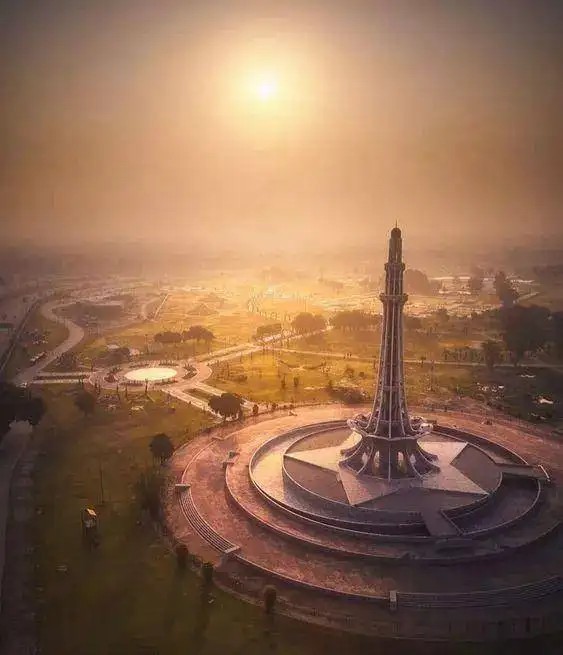MINAR-E-PAKISTAN
On March 23, 1940, the Muslim League met and adopted a resolution to establish Pakistan as an independent Muslim state. In June 1947, United Kingdom announced the Mountbatten Plan and agreed to the partition of India and Pakistan. On August 14 of the same year, Pakistan declared its independence and became a dominion of the Commonwealth. On March 23, 1956, Pakistan changed its autonomous territory into a republic and named itself the Islamic Republic of Pakistan. MINAR-E-PAKISTAN stands on the site of the Muslim League meeting, construction took eight years to complete in 1960, and it is the symbol of Pakistan's independence.
The MINAR-E-PAKISTAN is a minaret that combines the styles of Mughal empire architecture and modern architecture. Its base is nine meters high and has four platforms, the first platform was built of uncarved rough Taksilla stone, a symbol of the difficult years at the beginning of the struggle for independence; The second platform and the third platform were constructed with stone and chiseled stone respectively to symbolize the process of striving for independence; Finally, the fourth platform was constructed of smooth white marble to symbolize the complete victory of the struggle for independence. The base as a whole is like a blooming flower, guarding the "Flower Stamen" at the center of the flower -- the MINAR-E-PAKISTAN, which the tower is 62 meters high, and visitors can reach the top of the tower by stairs or elevators, overlooking the city’s scenery.
The minaret, a symbol of Pakistan's independence, attracts many tourists every year, and the square around the minaret is the main venue for many of the country's biggest political and public events.





